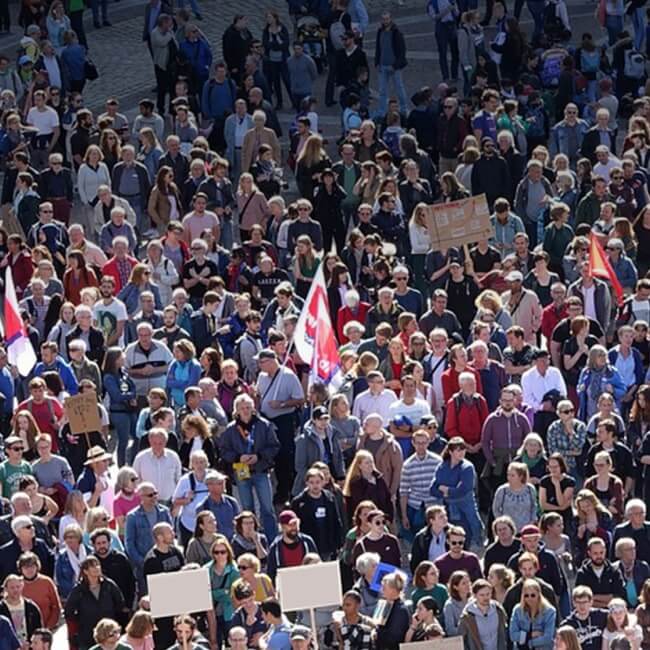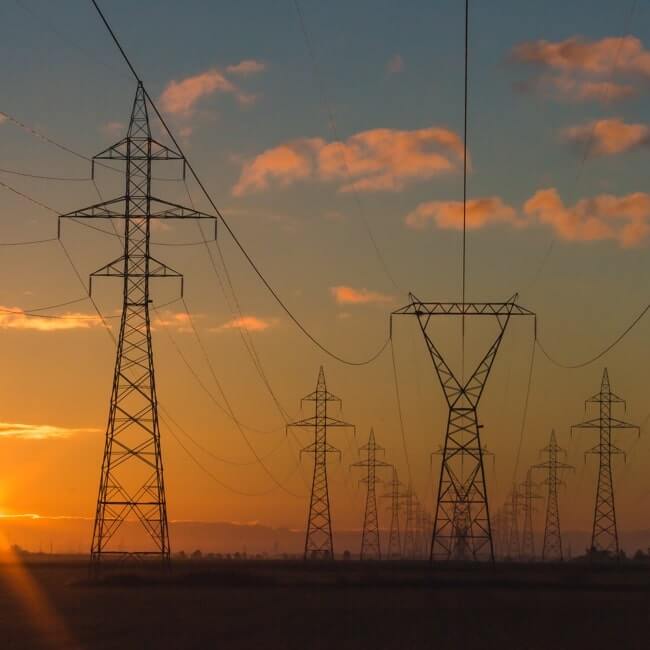Ecuador's war against crime: Unraveling the web of narco violence

Once considered an oasis of peace in Latin America, Ecuador has become one of the most violent countries in the region as drug trafficking has surged, with criminal organizations infiltrating the justice system and state institutions, as national attorney general Diana Salazar recently admitted.
Drug cartels established themselves to take advantage of Ecuador's geographical location between the world's top two cocaine producers, Peru and Colombia, and its relative proximity to major centers of consumption in the US and Brazil. Plus, the port of Guayaquil port allows traffickers to ship drugs to Europe.
The country has been shaken by a rapid rise in crime due to conflicts between gangs, some of which are allied to ruthless Mexican cartels, with a vertiginous rise in street assassinations and even last year's murder of a presidential candidate, Fernando Villavicencio, who was seeking election with an anti-corruption campaign.
A wave of violence surged again in early January with a series of bomb blasts and the kidnapping of police and prison guards, leading President Daniel Noboa to declare war on the gangs and deploy soldiers to regain control of the country.
BNamericas speaks with Fernando Carrión, academic and public security expert at Latin American social sciences school Flacso, based in Quito, about the conditions that created the fertile ground for the current crisis, which has most of the region concerned about its spread.
BNamericas: What has led Ecuador to the current spiral of violence and crime?
Carrión: I think it began in 2017 when the institutional structure of public security was dismantled. At that time we had a security coordination ministry, a justice ministry that was in charge of prisons, an interior ministry, which was responsible for security and an agency that defined anti-drug policy, but all of that ended up in the ministry of government, which has priority over policy.
In 2017 we had a rate of five homicides per 100,000 inhabitants and last year ended with a rate of 46, which means that the homicide rate multiplied by a factor of nine.
On the one hand, there is the absence of the State; and on the other, we must take into account that about five years ago there was a change in the collaboration of international criminal groups such as the Sinaloa cartel with local groups. Up until then, they had paid [local criminals] in dollars for their work to transport drugs. A shift occurred and they began paying them in drugs, which forced local groups to sell these drugs on the domestic market, leading to an increase in criminal organizations, domestic consumption, violence and money laundering.
The combination of the lack of security policies and the evolution of drug trafficking itself has meant that we have arrived at the current reality.
BNamericas: How far has drug trafficking penetrated Ecuador's politics and institutions?
Carrión: Drug trafficking has penetrated Ecuadoran society and this manifests in two ways: the 22 criminal organizations identified by President Daniel Noboa, which are substantial in size, and the likelihood that drug trafficking is one of the largest employers in the country. There is talk that there are 50,000 people involved in the gangs.
When analyzing the situation, we also have to consider the market: about US$3.5bn is laundered here annually via legal, privately owned companies. There has been a ‘legalized’ insertion of drug trafficking into the market, into the economy and into companies.
Drug trafficking has also penetrated the public sector, which is what the metastasis operation carried out by the attorney general's office has shown us.
[Editor's note: Attorney general Diana Salazar spearheaded a series of raids across the country in late 2023 to tackle corruption and drug trafficking, leading to the arrest of various high-ranking public officials, prosecutors, judges, police officers and prison guards.]
The presence of this illicit activity is very strong. It’s present in the justice system, in the municipalities, in the attorney general's office, everywhere.
BNamericas: In which sectors is money laundered?
Carrión: In tourism, the real estate sector, retail, finance and now very strongly in currency trading too.
BNamericas: How serious is the situation in Esmeraldas province on the border with Colombia?
Carrión: The problem of Esmeraldas is specifically because it's on the border with Colombia and not just with Colombia, but with Nariño department, which is the largest cocaine production area in the world. This border puts Esmeraldas in a particular position, to which we also have to add the fact that its port conditions, its poverty and the lack of attention given to it by the State, which has made it easy prey for criminal groups.
BNamericas: What do you think of the fact that Ecuador lacks funds to address the problems that already exist and the extra responsibilities that the declaration of war against the gangs will entail?
Carrión: Indeed, there’s a very serious problem of public funds. The tendency is that municipalities tend to finance the central government because they do what the police should do with state financing and that reduces funds for other types of things, which would allow them to improve their own security.
The financial and economic issue is, without a doubt, a structural issue of violence. The lack of resources is one of the big problems.
BNamericas: How deeply infiltrated is drug trafficking in the illegal mining sector in Ecuador?
Carrión: The problem is very serious and not just in Ecuador; it's happening in Colomba, Peru, Mexico ... There is great international, global coordination between these organized crime structures.
BNamericas: What can be expected in Ecuador after the government’s declaration of war against criminal organizations and the measures adopted by President Noboa?
Carrión: His approach is really heavy-handed and we will have to wait to see the results. For now there's fear, social disorientation, the heavy impact that this will have on the economy, somewhat similar to COVID-19. The situation is very complex. I have the impression that this is going to be cyclical: we're going to have periods of highs and lows.
At first, in the short term, the level of violence may decrease a little, but it will end up increasing because the economy will decline. It's a kind of vicious circle.
BNamericas: How do you see the regional situation? Do you expect similar violence to spread to other countries in the short or medium term?
Carrión: Generally speaking, Ecuador now has the fastest increasing rate of violence. Frankly, the fact that violence has increased by a factor of nine in just six years is crazy. However, Ecuador isn't the most violent country – it's the third most violent in the region after Jamaica and the Turks and Caicos Islands in the Caribbean.
In general, there has been an increase in violence in countries considered very safe, one of them is the case of Ecuador, but Chile, Uruguay and Costa Rica are also seeing quite high growth.
Chile still has a low homicide rate, around 6.7 per 100,000 inhabitants, but in 2018 it was at 4.5. The homicide rates per 100,000 inhabitants in Uruguay and Costa Rica are 12 and 14, respectively. The figures show that this phenomenon is becoming widespread throughout Latin America.
BNamericas: Given the alarming growth of drug trafficking and transnational crime, do you see any perspective for regional policies and efforts to combat them?
Carrión: No, because even bodies like the OAS don't have policies on this, neither does CELAC [Community of Latin American and Caribbean States], Unasur [Union of South American Nations] is in a terrible crisis and Mercosur is entering a major crisis.
In other words, I don't see anything similar to what happens in the EU, where there are significant policies to address these issues.
BNamericas: Does this mean that each country will have to continue struggling alone?
Carrión: Unfortunately, yes.
Subscribe to the leading business intelligence platform in Latin America with different tools for Providers, Contractors, Operators, Government, Legal, Financial and Insurance industries.
News in: Political Risk & Macro (Ecuador)

Ecuador's economy expected to grow 2.8% in 2025 after shrinking last year
Losses from the power outages resulting from the drought reached US$1.92bn, representing a 1.4% impact on GDP, the central bank reported.

Oil, infra, fiscal deficit: The issues Ecuador's Noboa will face during his second term
Daniel Noboa won Sunday's election, as his new administration is expected to follow the path of his current one.
Subscribe to Latin America’s most trusted business intelligence platform.
Other projects
Get key information on thousands of projects in Latin America, from current stage, to capex, related companies, key contacts and more.
- Project: Atacama Regional Airport - Second Concession
- Current stage:

- Updated: 3 days ago
- Project: Queilén new hospital
- Current stage:

- Updated: 3 days ago
- Project: New Jorge Gaitán Cortés Avenue
- Current stage:

- Updated: 3 days ago
- Project: Santa Rita
- Current stage:

- Updated: 2 days ago
- Project: El Trebal Wastewater Reuse (Maipo Return)
- Current stage:

- Updated: 3 days ago
- Project: Green hydrogen production project in Brazil
- Current stage:

- Updated: 3 days ago
- Project: Picha
- Current stage:

- Updated: 3 days ago
- Project: Santa Cruz Wind Farm
- Current stage:

- Updated: 2 days ago
- Project: Fundación federal detention center
- Current stage:

- Updated: 3 days ago
- Project: GP2 hydroelectric plant
- Current stage:

- Updated: 3 days ago
Other companies in: Political Risk & Macro (Ecuador)
Get key information on thousands of companies in Latin America, from projects, to contacts, shareholders, related news and more.
- Company: Richard Hidalgo Vásconez Cía. Ltda.


